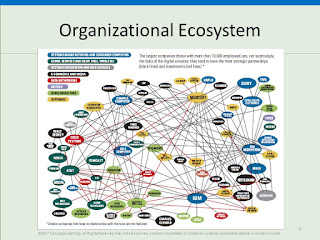Understanding
organizational goals and strategies, as well as the concept of fitting design
to various contingencies, is a first step toward understanding organizational
effectiveness. Organizational goals represent the reason for an organization’s
existence and the outcomes it seeks to achieve. The next few sections of the
chapter explore the topic of effectiveness and how effectiveness is measured in
organizations.
Organizational effectiveness is the degree
to which an organization realizes its goals.48 Effectiveness is a broad
concept. It implicitly takes into consideration a range of variables at both
the organizational and departmental levels. Effectiveness evaluates the extent
to which multiple goals—whether official or operative—are attained.
Efficiency is a more limited concept that
pertains to the internal workings of the organization. Organizational
efficiency is the amount of resources used to produce a unit of output. It can
be measured as the ratio of inputs to outputs. If one organization can achieve
a given production level with fewer resources than another organization, it
would be described as more efficient.
Sometimes efficiency leads to
effectiveness, but in other organizations, efficiency and effectiveness are not
related. An organization may be highly efficient but fail to achieve its goals
because it makes a product for which there is no demand. Likewise, an
organization may achieve its profit goals but be inefficient. Efforts to increase
efficiency, particularly through severe cost cutting, can also sometimes make
the organization less effective. One regional fast food chain wanting to cut
costs decided to reduce food waste by not cooking any food until it was
ordered. The move reduced the chain’s costs, but it also led to delayed
service, irritated customers, and lower sales.
Overall effectiveness is difficult to
measure in organizations. Organizations are large, diverse, and fragmented.
They perform many activities simultaneously, pursue multiple goals, and
generate many outcomes, some intended and some unintended. Managers determine
what indicators to measure in order to gauge the effectiveness of their
organizations. Studies and surveys have found that many managers have a difficult
time with the concept of evaluating effectiveness based on characteristics that
are not subject to hard, quantitative measurement. However, top executives at
some of today’s leading companies are finding new ways to measure
effectiveness, including the use of such “soft” indications as customer loyalty
and employee engagement.
REFERENCE

